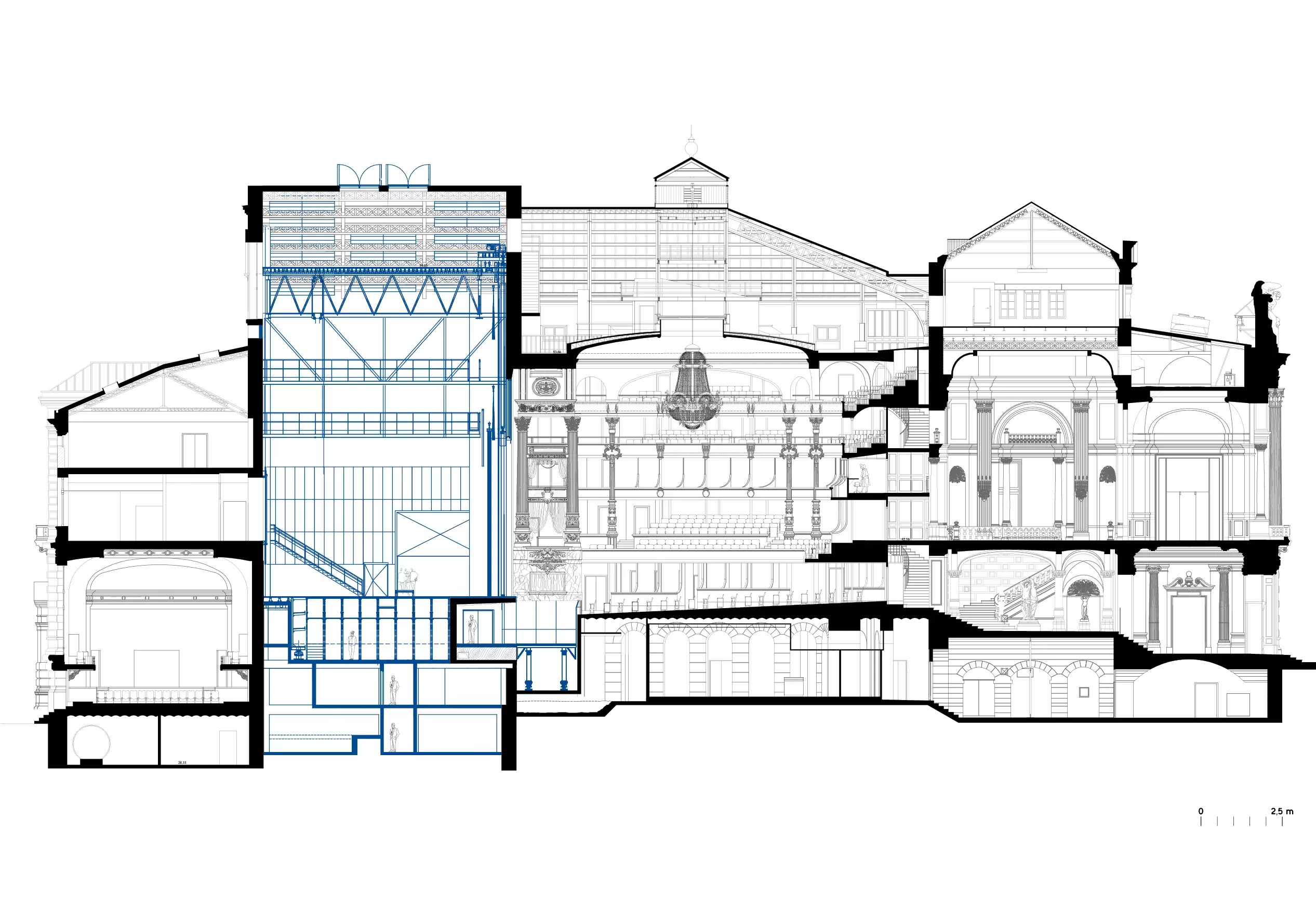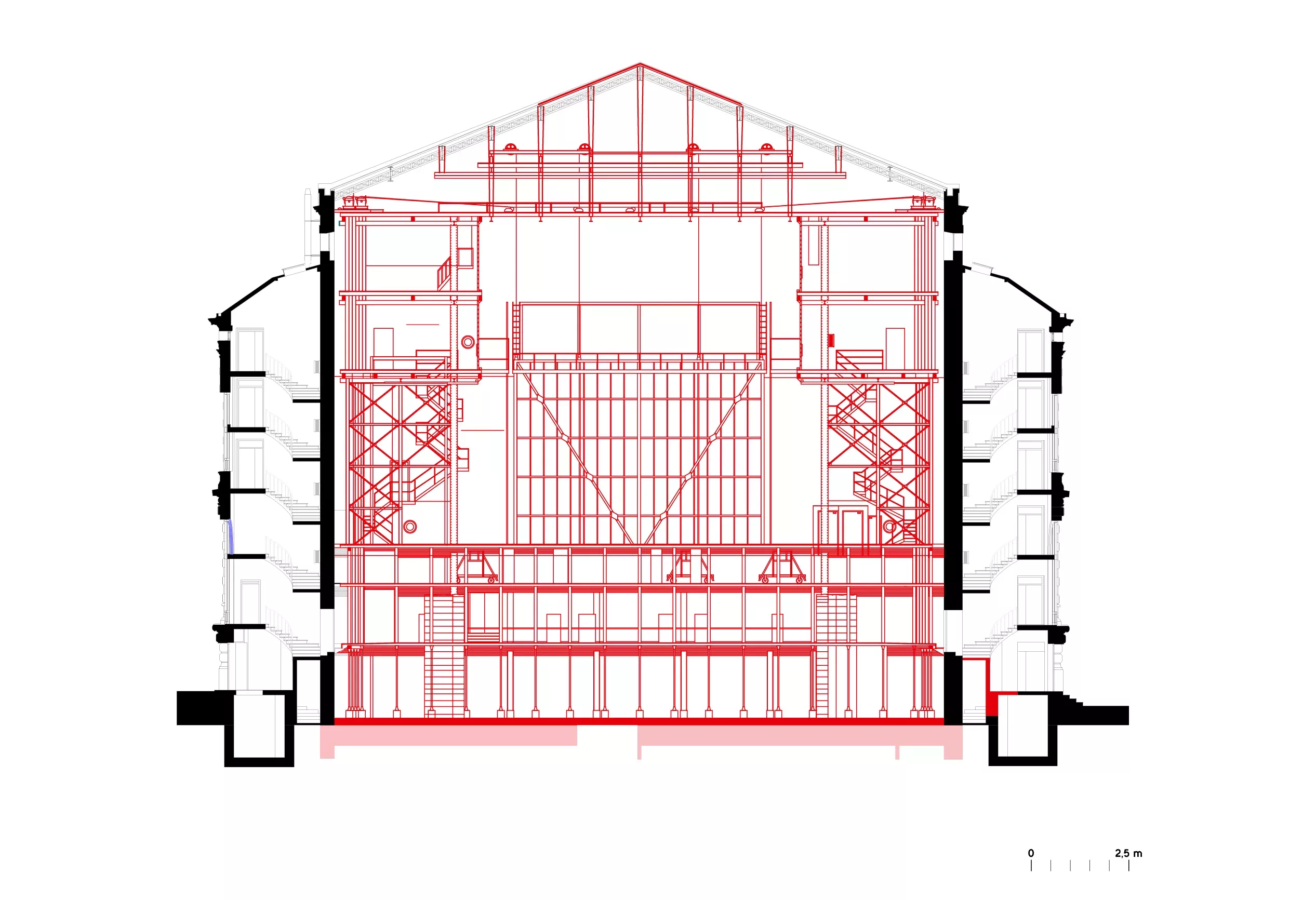Opéra Comédie
Montpellier
Restructuring of the stage area
Frédéric Fiori (Associate Architect, Heritage Architect)
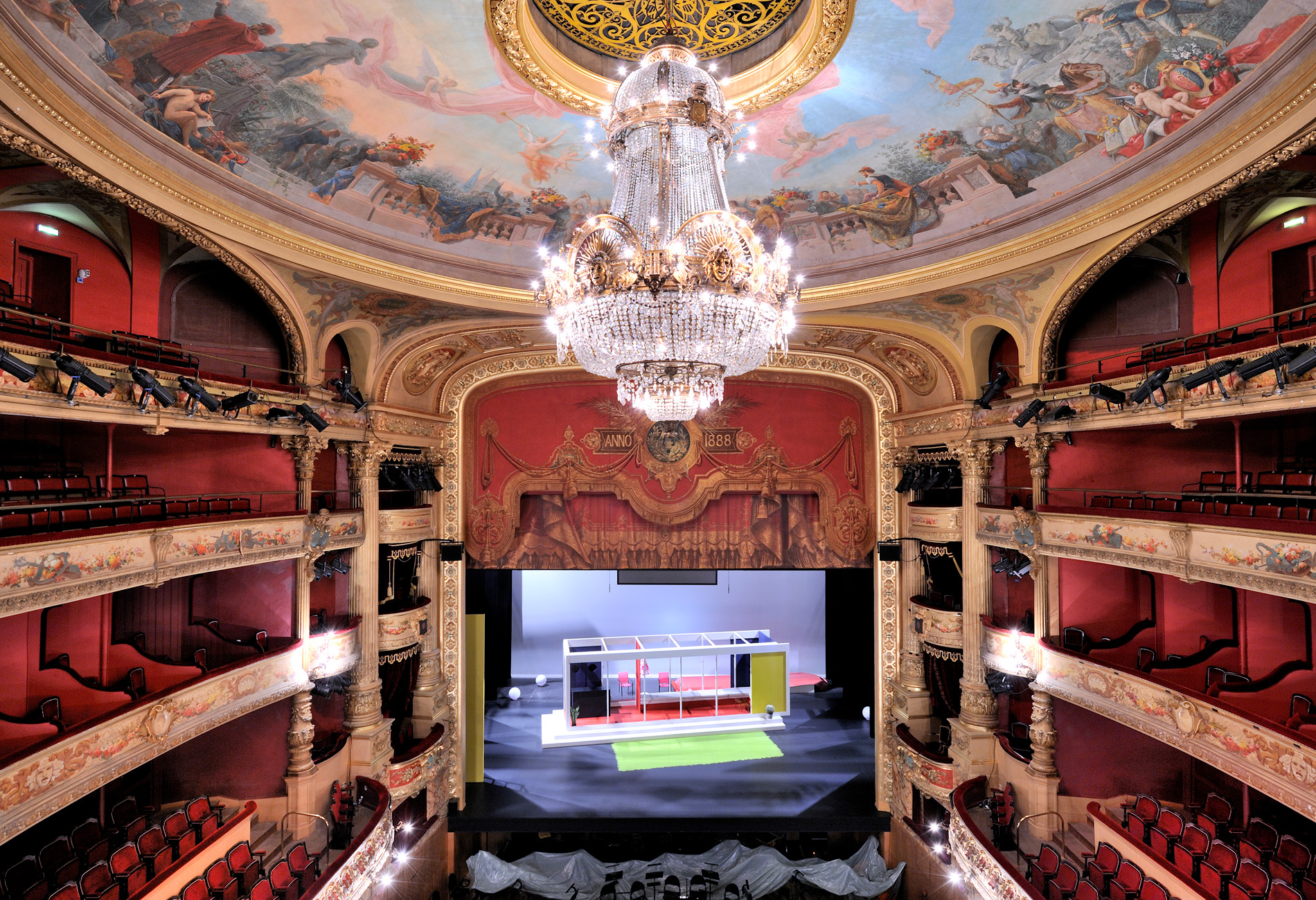
As an Italian-style theatre with 1,200 seats, the Opéra Comique was built at the end of the nineteenth century according to plans drafted by Cassien-Bernard, a student of Charles Garnier.
Away from the audience’s eyes, our intervention involved replacing the original wooden stage – which had become obsolete in regulatory, technical, and operational terms – with a modern and more functional system. The project proved somewhat tricky, because all the pieces were brought in via the windows, as the roof structure was not modified.
The new stage, which rests on micro-piles, includes a concrete structure that goes up to the level of the stage. This is topped by a metal frame that supports motorised and computerised stage machinery. The lambrequin, stage curtain, and other original elements were reinserted or restored.
Charles Garnier’s influence is particularly visible in the decorations and the attention paid to amenities.

The frame of the stage, which holds all the stage equipment (grids, upper grids, and gangways), was built entirely from scratch. A “box in a box” was built to avoid having to rest against the building walls and frame.
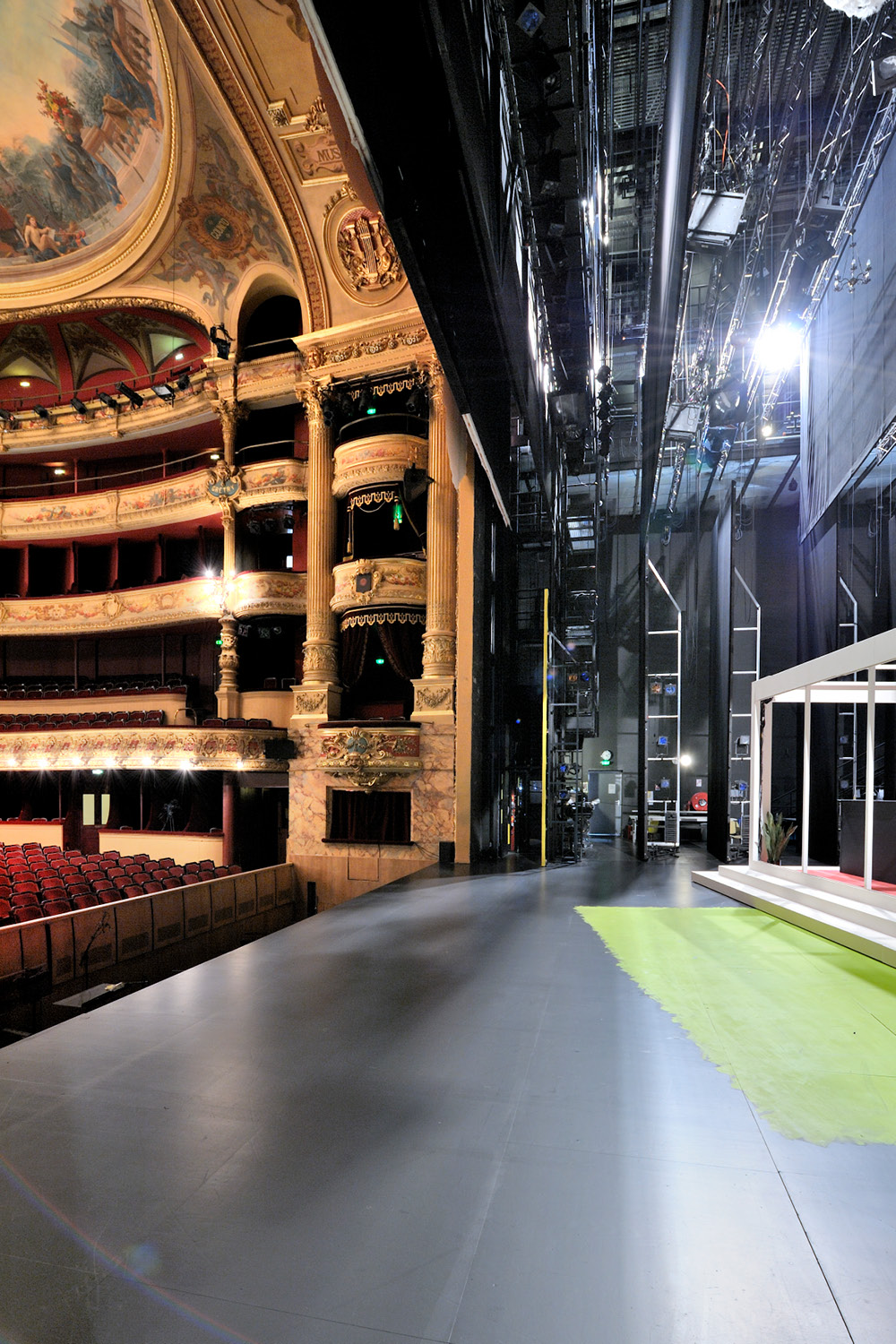
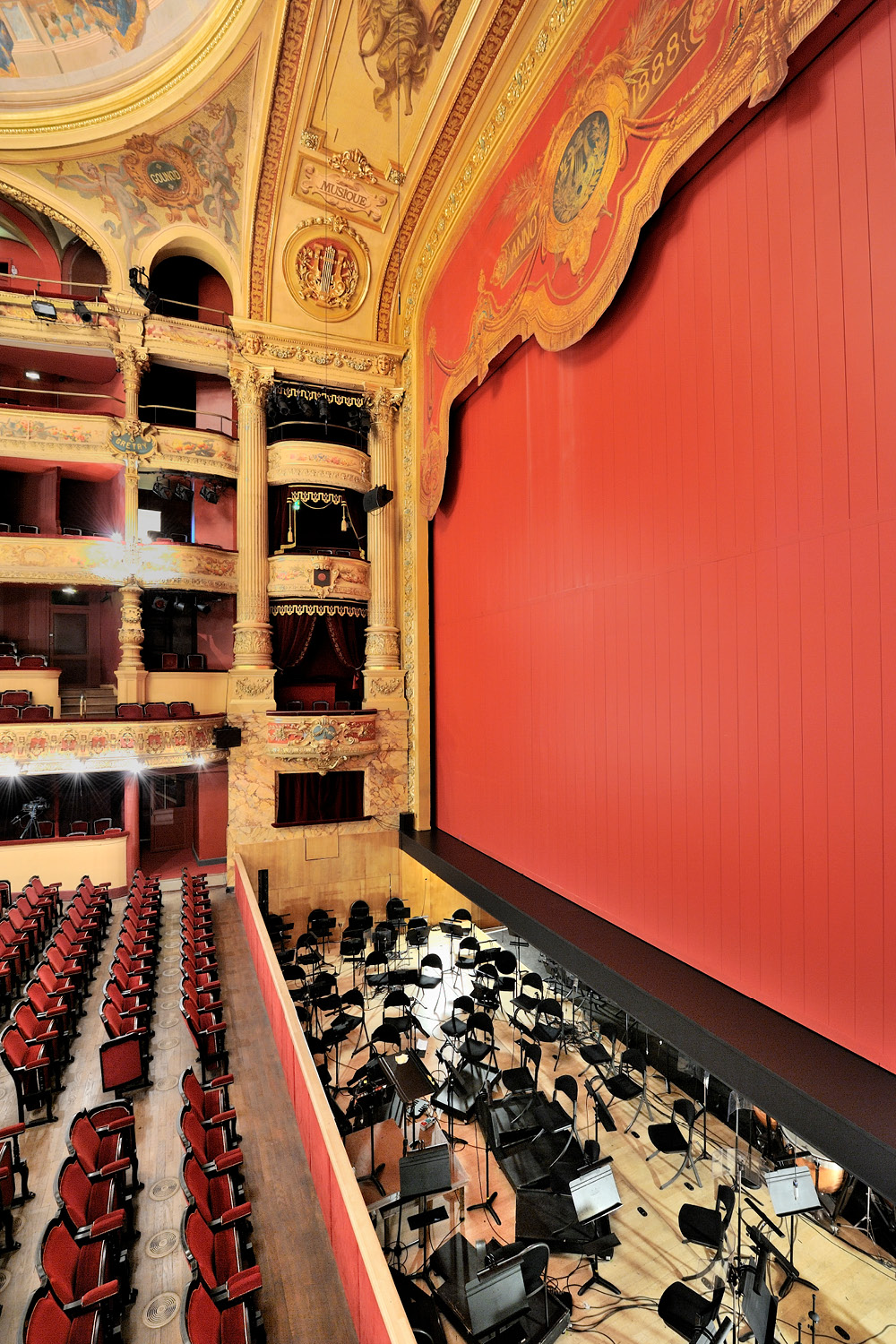
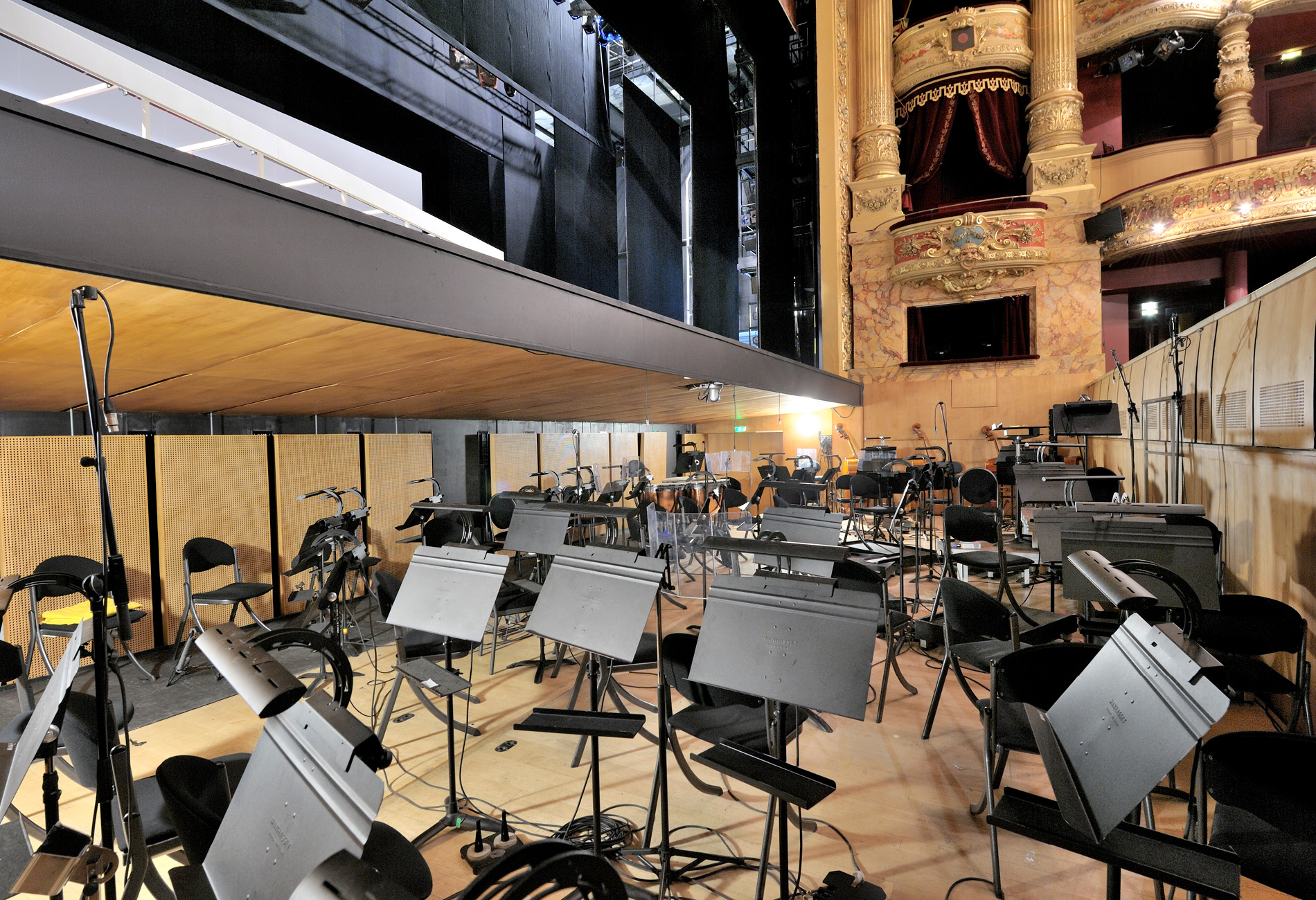
The spatial and acoustic configuration of the orchestra pit was improved with the removal of the posts.


